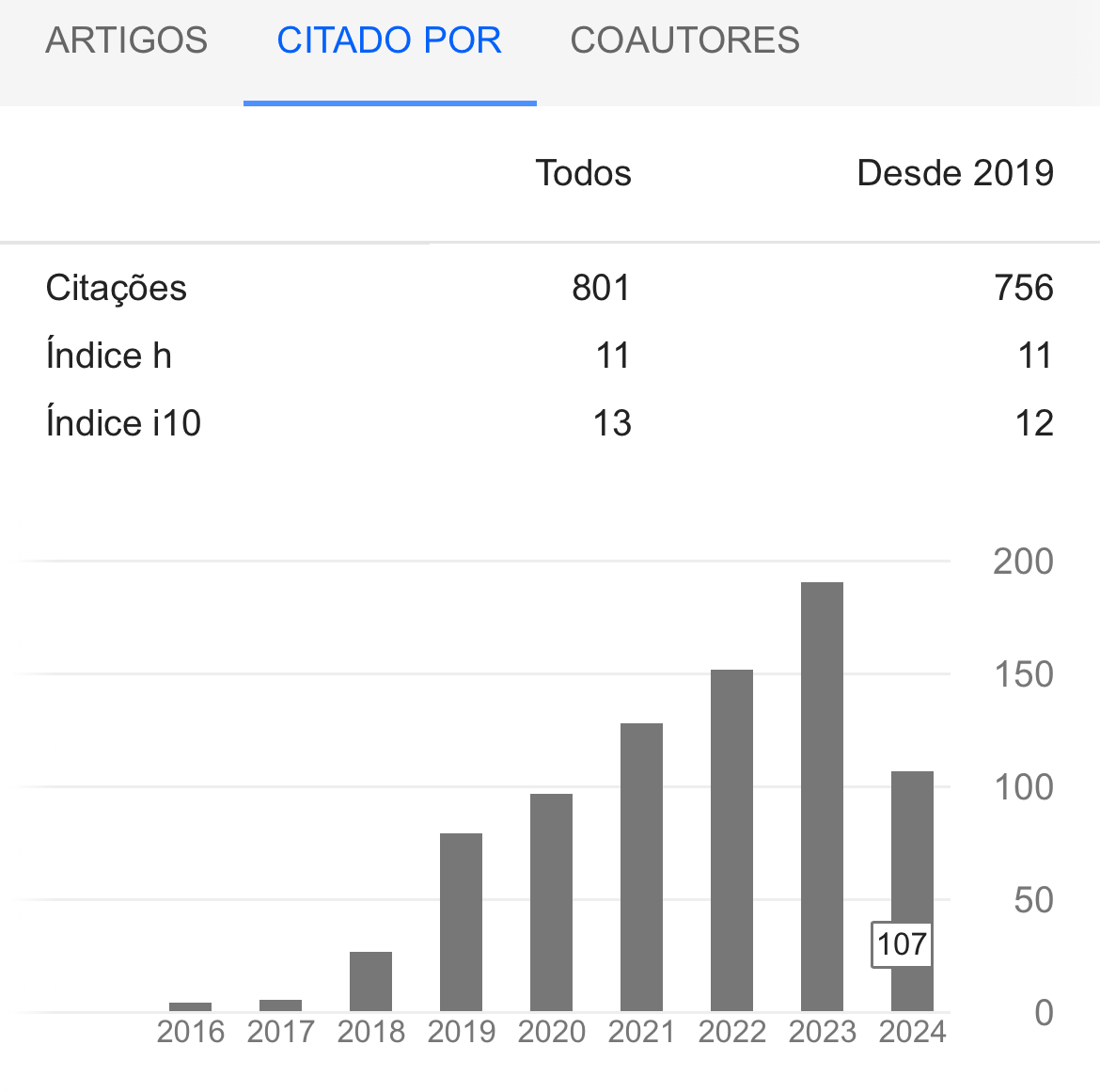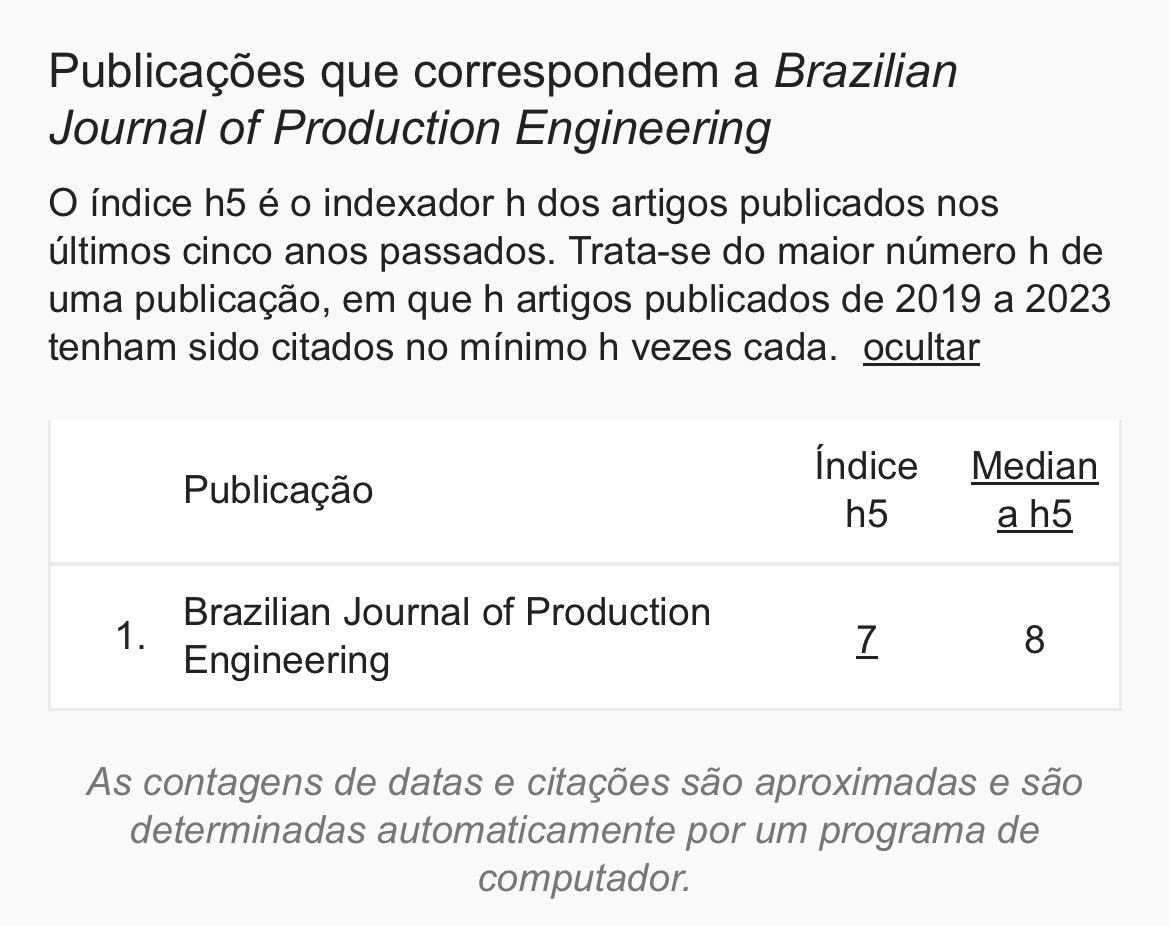ÍNDICE DE POTENCIALIDADE SOCIOECONÔMICA E PRODUTIVA (IPSP) DA PESCA MARINHA E ESTUARINA COMO APOIO AO DESENVOLVIMENTO SUSTENTÁVEL
Resumo
O setor pesqueiro contribui para a população mundial sendo a principal fonte de renda e alimentação de diversos países. Devido à sua relevância social e econômica, existe a necessidade de realizar um maior planejamento e desenvolvimento para proporcionar melhores condições aos que sobrevivem da pesca. Desse modo, o presente artigo tem como objetivo analisar os índices de potencialidade social, econômica e ambiental e identificar os municípios devido à sua capacidade de desenvolvimento da pesca. Com relação à metodologia, foram coletadas informações referentes aos municípios estudados para a realização do método AHP (Analytic Hierarchy Process),identificando o município de melhor potencial para, posteriormente, estabelecer uma matriz SWOT (Strenghts, Weakness, Opportunities, Threats) que identificou as forças, fraquezas, oportunidades e ameaças. Como resultado, pôde-se constatar que o município de Vitória obteve o maior IPSP e, portanto, cabe aos órgãos competentes o interesse em realizar maiores investimentos e incentivos à atividade pesqueira na região.
Downloads
Referências
Baycheva-Merger, T. &Wolfslehner, B. (2016). Evaluating the implementation of the Pan-European Criteria and indicators for sustainable forest management - A SWOT analysis. EcologicalIndicators, 60: 1192-1199.
BRASIL. (2010a). IBGE - Instituto Brasileiro de Geografia e Estatística. Cidades@. Censo 2010. Acessado em 25 de maio de 2015 em http://www.cidades.ibge.gov.br/xtras/home.php?lang=
BRASIL. (2010b). MPA - Ministério da Pesca e Aquicultura. Pesca. Brasília. Acessado em 20 de maio de 2015 em http://www.mpa.gov.br/index.php/pesca
Charles, V. &Zegarra, L. F. (2014). Measuring regional competitiveness through data envelopment analysis: A Peruvian case. Expert Systems with Applications, 41(11): 5371-5381.
Comino, E. & Ferretti, V. (2016). Indicators-based spatial SWOT analysis: Supporting the strategic planning and management of complex territorial systems. Ecological Indicators, 60: 1104-1117.
CORTINA, J. M. What is coefficient alpha? An examination of theory and applications. Journal of Applied Psychology. v. 78, p. 98-104. 1993.
Costa, C. A. B. &Vansnick, J. C. M. (1994). An interactive path towards the construction of cardinal value functions. Internationaltransactions in operationalResearch, 1(4): 489-500.
CTA - Serviços em Meio Ambiente. (2012). Complemento ao projeto de Monitoramento do Desembarque Pesqueiro Espírito Santo. Relatório Técnico. Vitória: CTA.
Dias, T. L. P., Rosa, R. S. & Damasceno, L. C. P. (2007). Aspectos socioeconômicos, percepção ambiental e perspectivas das mulheres marisqueiras da Reserva de Desenvolvimento Sustentável Ponta do Tubarão (Rio Grande do Norte, Brasil). Gaia Scientia, 1(1): 25-35.
Eslamipoor, R. &Sepehriar, A. (2014). Firm relocation as a potential solution for environment improvement using a SWOT-AHP hybrid method. Process safety and environmental protection, 92(3): 269-276.
Helms, M. M. & Nixon, J. (2010). Exploring SWOT analysis–where are we now? A review of academic research from the last decade. Journal of strategy and management, 3(3): 215-251.
Hill, T. & Westbrook, R. (1997). SWOT analysis: it's time for a product recall. Long range planning, 30(1): 46-52.
Houben, G., Lenie, K. &Vanhoof, K. (1999). A knowledge-based SWOT-analysis system as an instrument for strategic planning in small and medium sized enterprises. Decision support systems, 26(2): 125-135.
Hwang, C. L. & Yoon, K. (1981). Multiple Attribute Decision Making. In: Lecture Notes in Economics and Mathematical Systems, Springer-Verlag, Berlin. Anais... v. 186. Berlin: Springer-Verlag.
INCAPER - Instituto Capixaba de Pesquisa, Assistência Técnica e Extensão Rural. (2010). INCAPER em Revista: informativo especial do instituto capixaba de pesquisa, assistência técnica e extensão rural. Vitória: INCAPER.
Ishizaka, A. & Labib, A. (2011). Review of the main developments in the analytic hierarchy process. Expert Systems with Applications, 38(11): 14336-14345.
Jackson, S. E., Joshi, A. & Erhardt, N. L. (2003). Recent research on team and organizational diversity: SWOT analysis and implications. Journal of management, 29(6): 801-830.
Kalatpour, O. (2017). Determining the appropriate strategies for emergency planning through AHP-SWOT. Journal of Business Continuity & Emergency Planning, 11(1): 85-94.
Khatri, J. K. &Metri, B. (2016). SWOT-AHP Approach for Sustainable Manufacturing Strategy Selection: A Case of Indian SME. Global Business Review, 17(5): 1211-1226.
Kirchner, R. M., Chaves, M. A., Silinske, J., Essi, L., Scherer, M. E. &Durigon, E. G. (2016). Análise da produção e comercialização do pescado no Brasil. Revista Agro@mbiente On-line, 10(2): 168-177.
Knox, W. & Trigueiro, A. (2015). Saberes, Narrativas e Conflitos na Pesca Artesanal. Vitória: EDUFES.
Kurttila, M., Pesonen, M., Kangas, J. &Kajanus, M. (2000). Utilizing the analytic hierarchy process (AHP) in SWOT analysis - a hybrid method and its application to a forest-certification case. Forest policy and economics, 1(1): 41-52.
Lanius, J. W. &Morais, R. T. R. (2016). O uso da técnica SWOT na elaboração do diagnóstico estratégico, em uma rede concessionária de veículos, na busca da vantagem competitiva. Revista de Administração de Empresas Eletrônica-RAEE, 4: 331-360.
Liang, G. S. & Wang, M. J. J. (1991). A fuzzy multi-criteria decision-making method for facility site selection. The International Journal of Production Research, 29(11): 2313-2330.
NOAA. National Oceanic and Atmospheric Administration. (2014). Crude Oil Causes Developmental Abnormalities in Large Marine Fish. Acessado em 21 de novembro de 2015 em http://www.noaanews.noaa.gov/stories2014/20140324_dwh_fishimpact.html
Okello, C., Pindozzi, S., Faugno, S. &Boccia, L. (2014). Appraising bioenergy alternatives in Uganda using strengths, weaknesses, opportunities and threats (SWOT) - Analytical Hierarchy Process (AHP) and a desirability functions approach. Energies, 7(3): 1171-1192.
Oliveira, R. C. (2015). O panorama da aqüicultura no Brasil: a prática com foco na sustentabilidade. Revista INTERTOX de toxicologia, risco ambiental e sociedade, 2(1):
Paredes Araya, D. &Iturra Rivera, V. (2013). Substitution bias and the construction of a spatial cost of living index. Papers in regional Science, 92(1): 103-117.
Pechrová, M. I. (2015). mpact of the Rural Development Programme Subsidies on the farms’ inefficiency and efficiency. Agricultural Economics–Czech, 61(5): 197-204.
Polat, Z. A., Alkan, M. &Sürmeneli, H. G. (2017). Determining strategies for the cadastre 2034 vision using an AHP-Based SWOT analysis: A case study for the turkish cadastral and land administration system. Land Use Policy, 67: 151-166.
PROMAR - Organização sócio ambientalista. (2005). Macrodiagnóstico da Pesca Marinha do estado do Espírito Santo. Relatório Técnico - FPM RT 005/05. Vitória: PROMAR.
Ramlan, R., Omar, S. S., Wong, J. Y. &Sorooshian, S. (2016). SME Swot Ranking for Strategic Planning Using Analytic Hierarchy Process (AHP). Information, 19(10B): 4755.
Rocha, K. S., Silva, R. V. & Freitas, R. R. (2012). Uma análise da percepção ambiental e transformação socioeconômica de uma comunidade de pescadores artesanais em região estuarina no sudeste do Brasil. Revista da GestãoCosteiraIntegrada, 12(4): 535-543.
Saaty, T. L. (1977). A scaling method for priorities in hierarchical structures. Journal of mathematical psychology, 15(3): 234-281.
Shrestha, R. K., Alavalapati, J. R. R. &Kalmbacher, R. S. (2004). Exploring the potential for silvopasture adoption in south-central Florida: an application of SWOT–AHP method. Agricultural Systems, 81(3): 185-199.
Slee, B. & Feliciano, D. (2015). Challenges in the design of indicators for assessing the impact of the Scotland Rural Development Programme 2007–2013 on climate change mitigation. EcologicalIndicators, 59: 94-103.
Teixeira, J. B., Lima, A. C., Boechat, F. P., Rodrigues, R. L. & Freitas, R. R. (2012). Potencialidade social e econômica da pesca e maricultura no Estado do Espírito Santo, Brasil. Revista da Gestão Costeira Integrada, 12(4): 569-575.
Viegas, M. C., Moniz, A. B. & Santos, P. T. (2014). Artisanal fishermen contribution for the integrated and sustainable coastal management - application of strategic SWOT analysis. Procedia - Social and Behavioral Sciences, 120: 257-267.
Wang, X. P., Zhang, J. & Yang, T. (2014). Hybrid SWOT approach for strategic planning and formulation in China Worldwide Express Mail Service. Journal of applied research and technology, 12(2): 230-238.
Zhang, L., MA, J., Yang, F., Fu, Z. & Liu, X. (2014). Optimization of Developmental Path on Vegetable Industry in Beijing Based on an AHP-SWOT Hybrid Model. Sensor Letters, 12(3-4): 901-907.
Downloads
Arquivos adicionais
Publicado
Como Citar
Edição
Seção
Licença
Copyright (c) 2019 Brazilian Journal of Production Engineering - BJPE

Este trabalho está licenciado sob uma licença Creative Commons Attribution-NonCommercial-ShareAlike 4.0 International License.

Atribuição 4.0 internacional CC BY 4.0 Deed
Esta licença permite que outros remixem, adaptem e desenvolvam seu trabalho não comercialmente, contanto que eles creditem a você e licenciem suas novas criações sob os mesmos termos.










































































